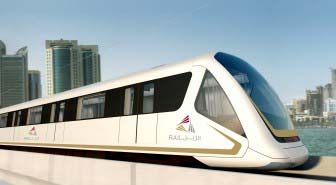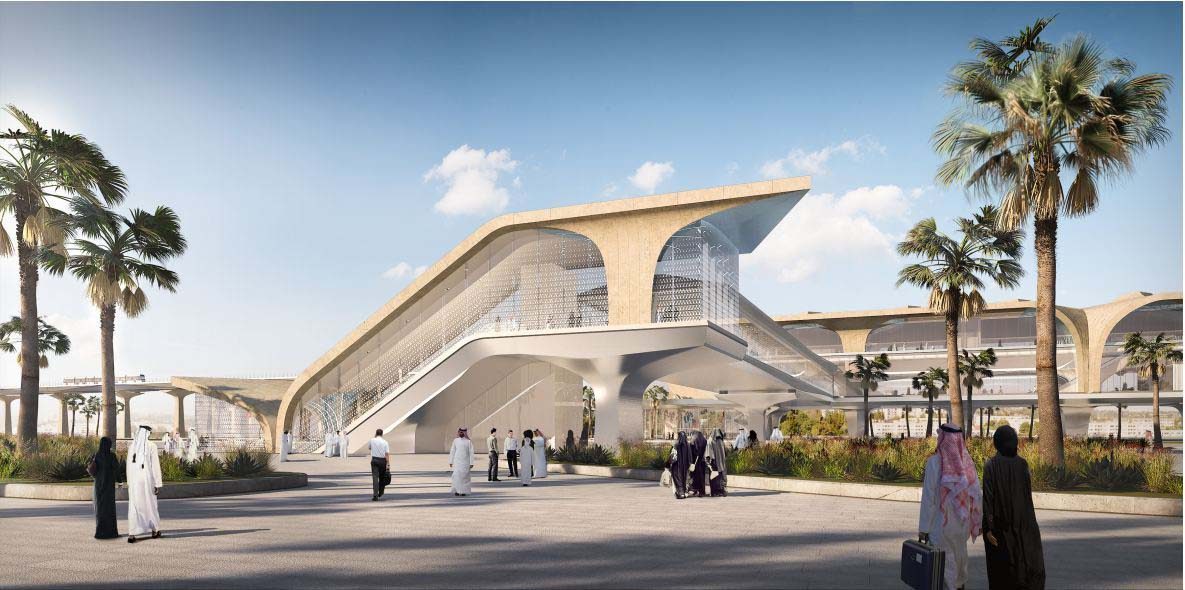
With Qatar Rail saying that roughly 50 percent of the tunneling for the Doha Metro is now complete, contractors have begun focusing on how best to develop the land around the underground stations to encourage as many people as possible to use them.
Several competing ideas, including high-tech parking lots and high-density mixed-use developments, were on display today at the Qatar Transport Forum, a three-day event that’s giving private firms the opportunity to meet local officials.
In addition to rail-related companies, there were also representatives from Qatar’s public transportation authority Mowasalat and special economic zone firm Manateq, as well as representation from construction contractor UrbaCon and financial services provider Qatar National Bank.

While several vendors said Qatar Rail has not yet specified what it wants built around the metro stations, the ideas on display today offered some insights into what residents might see when the underground line opens to passengers in 2019.
Some of the companies focused on what riders would experience before boarding a train, suggesting that passengers could drive their vehicles nearly up to the entrance or walk through an air-conditioned shopping concourse before reaching the platform.
Parking
Qatar Rail has previously mentioned the need to design its transit system in a way that encourages residents to leave their cars at home. One way to do this would be to run high-frequency feeder buses through residential neighborhoods.
That system may work for some passengers, but one prospective contractor at today’s forum predicted that many transit users would still prefer to use their private vehicles to get to the train stations.
Speaking to Doha News, Jukka Riivari, the CEO of Finland-based Leanpark said:
“If you don’t solve the issue of parking cars at the station in a good way, you will lose out on some of the potential benefits of the metro.”
At the forum, Riivari’s company is pitching a high-tech parking garage that he said takes up significantly less space than traditional facilities.
Motorists would pull into one of several special enclosed bays and exit their vehicle. Once they’re out of the bay, a robotic platform moves their car or SUV into a parking stall, allowing vehicles to be packed more tightly together than in a traditional garage.
Riivari said his firm has constructed two parking garages in Lahti, Finland. Its selling points include eliminating time wasted driving around a garage looking for an empty spot, as well as significantly reducing the potentially long walk from a parking spot to the train entrance.
Leanpark’s garages, which cost between US$10 million and $15 million for a 500-vehicle system, can also be disassembled and relocated to areas with high demand for parking, he added.
He said parking facilities are generally needed at stations near transit passengers’ homes, rather than their workplaces.
“The center of the city (can reduce its reliance) on cars. But the outskirts of the city (still need parking),” he said.
Transit-oriented developments
Others who are closely watching the metro project have also acknowledged that park-and-ride facilities are common at stations on the periphery of cities around the world, but argue that it’s still vital to design neighborhoods and buildings to reduce residents’ reliance on vehicles.

Atkins Middle East, a design and engineering firm, is working with the Ministry of Municipality and Urban Planning and helping to coordinate the plans of the ministry, Qatar Rail and other authorities.
Roger Cruickshank, a strategic transportation leader and director with Atkins, said Qatar is considering various possibilities when it comes to developments that make it easier for residents to hop on a train or bus, so that they are not blocked by busy roads, massive parking lots or other obstacles.
“You can put an office building on top of a station, but it is much more than that,” he told Doha News.
He suggested urban planners take a wider view of making entire communities friendlier to pedestrians and cyclists, and make it easier to connect with rapid transit stations.

For example, Dubai is building the Union Oasis project, which will include hundreds of flats and offices above one of the emirate’s busiest metro stations.
Other ideas would include as rethinking existing neighborhoods by installing air conditioned bridges that allow rail passengers to walk to office or residential hubs while escaping the heat, Cruickshank said.
Similarly, the basements of existing buildings can be modified so that they’re linked to rail stations via subterranean corridors that bring rail passengers directly into a shopping center or office building lobby.
Thoughts?







